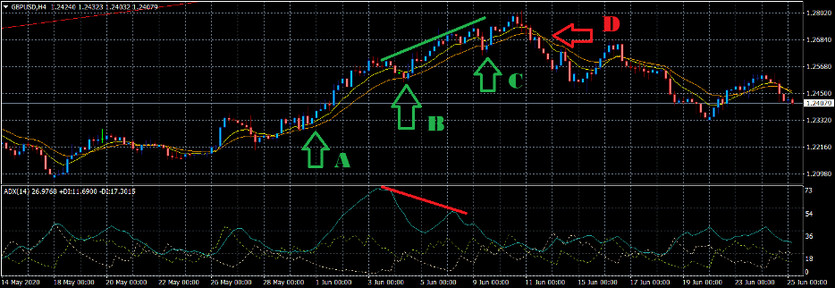When we first learn how to trade, we often think of trading in the simplest way possible. When we buy a stock or a currency pair, we buy it and then when we want to take profits or throw in the towel, we sell it.
But scaling in is a more advanced trade management strategy that can help you take advantage of multiple opportunities at the same time.
What Is Scaling In?
Scaling in is the act of buying into a position gradually over time. Once you have set the amount that you are willing to risk, whether it’s a set amount or 5% of your Forex account, you can divide that up by the number of orders you expect to span your purchases of the asset across.
If you see a trend developing that you think will be a long-term trend, you can enter one trade at that point. But within a larger trend, there are any number of smaller trades that can be profitable.
You would then be able to scale into the position with a different stop loss or take profit. The combined risk of these trades should sum up your desired maximum loss limit.
How To Scale In?
So, if you wanted to risk only 5% of your Forex account and split it across four trades, each trade should be set up to risk only 5% / 4 = 1.25%.
Consider the chart below of GBP/USD. Once the Average Directional Index (ADX) indicator reaches above 30, it is a sign that a trend is starting.
Another signal that a trend is underway is the moving averages that we are using (These are EMA9 and EMA18). Say that you enter a position at point A where the ADX reaches above 30. You will set the stop loss to only risk 1.25% of your account.
So, you would calculate the pip cost and set the stop loss at that point where the number of pips lost multiplied by the pip cost would correspond with 1.25% of your account.
Another trading opportunity opens up at point B. The price is reaching down below the EMA9 and touching the EMA18. The move is not enough to change the relative positions of the EMAs themselves, but they can act as support in and of themselves. So, we enter another buy here, with the stop loss being set in the same way as before, at that point where we would only lose 1.25% of our account on this trade at B.
After we enter the trade at point B, something weird happens. There is a bearish divergence between the ADX and the price of GBP/USD. This suggests that the price uptrend is no longer as meaningful as it seems. The market notices it too because just as soon as it is obvious, the price begins to tank. It would be best to close both positions A and B at point C, where the price begins to head below the EMAs.
A trader who did not see the divergence would likely consider point C a buying opportunity. The position opened at C would have broken even if sold in the collapse of the trend at point D. You could have closed position B at point D and pocketed some profits while keeping the position open at A to see what happens next.
Conclusion
Scaling in allows a trader to pivot in and out of the price action as it happens. The profits earned by the longest-held positions can protect you from losses suffered in subsequent positions.





